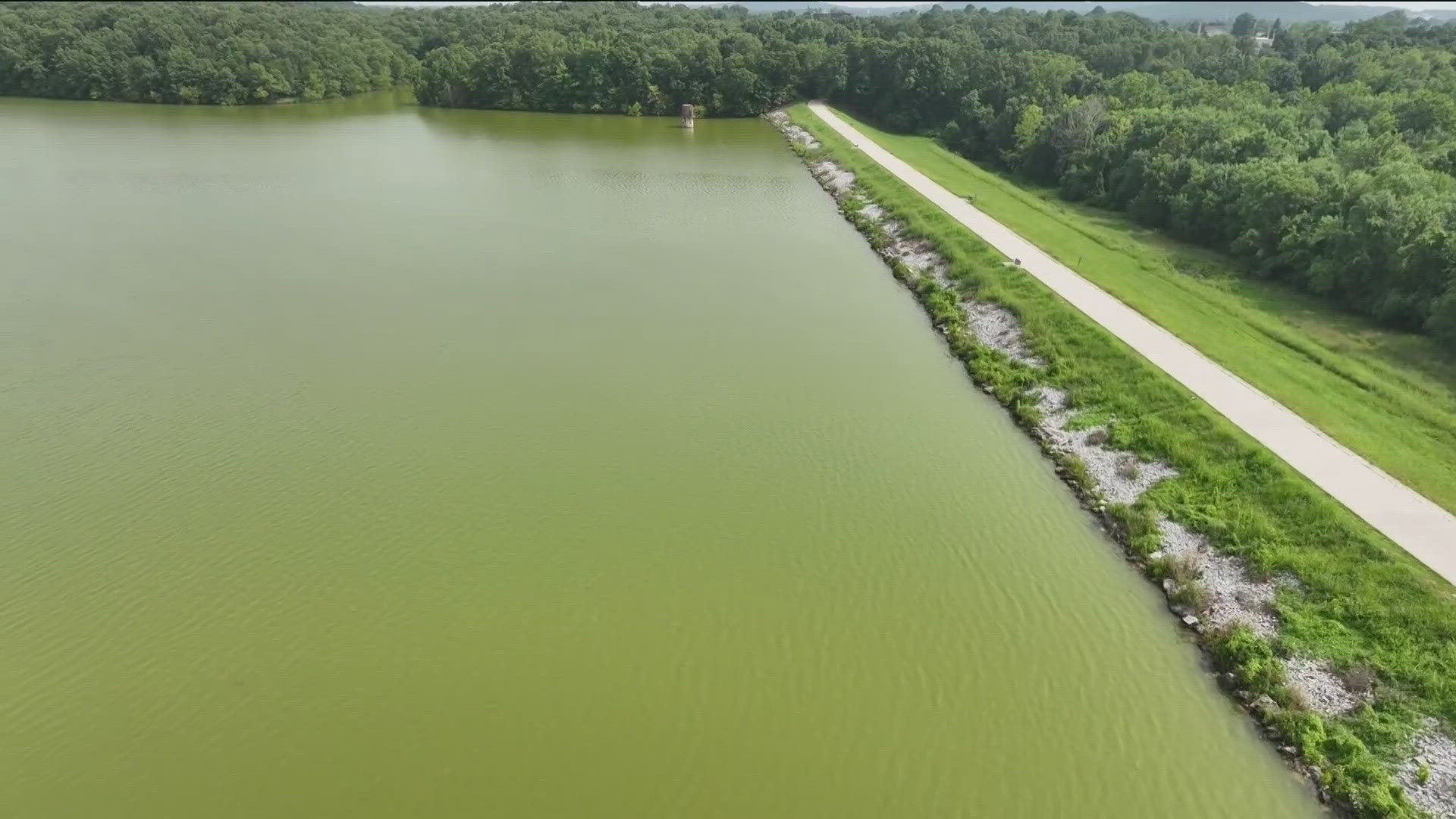FAYETTEVILLE, Ark. — Every summer, our area's bodies of water seem to close down because of bacteria in the water. In Fayetteville, this continues to happen with harmful algal blooms in Lake Fayetteville. Since 2019, researchers have studied the patterns of these blooms in hopes of protecting the public.
Brian Haggard, the director of the Arkansas Water Resources Center, said the study originated from his work with a group of honor students from the first-year engineering program at the College of Engineering at the University of Arkansas.
"We had just gotten this new piece of equipment, and we wanted to get some samples from lakes around Fayetteville to analyze, just to see if we could see any total Microcystin," Haggard said.
Haggard explained that harmful algal blooms can provide a myriad of toxins. More specifically, Lake Fayetteville has become susceptible to a liver toxin and possible human carcinogen, Microcystin.
"It could be through dermal contact — your skin of getting in the water to go paddleboard or to go kayak or fish," Haggard said. "It could also be pets that are swimming in the lake or drinking the water when they're thirsty."
Haggard said this occurs naturally in man-made reservoirs because it traps sediments from the tributary streams. The nutrients provide fuel growth in the algae, which eventually blooms. While it sounds like an inevitable danger, Haggard said there are signs to look out for.
"You can see these bright green, you know, surface scums," Haggard said. "It's like these little patches, and they'll be like these wispy little curves in it ... As you get closer to the shore, those definitely become more and more prominent."
Haggard said the blooms can occur randomly throughout the summer, but they peak during late spring, early summer, and fall. He said researchers in the Midwest are also looking at the winter months. To their surprise, blooms and toxins can be found randomly through the colder months.
Haggard said using visual cues and awareness of the blooms' peak months is the best way to tell if there's a current danger in the water. In their five years of studies, samples gathered by researchers produce data a month later when the harmful algal blooms could already be gone from the water.
"Even the triggers seem to change," Haggard said. "What happens in one year when we're doing our data analysis and running our statistics, one year may tell us one great story, but then the next year tells us a little bit different story. And so that's a real challenging aspect of science is when you're having to study the natural environment like this is it doesn't behave the same way year to year."
Yet, researchers continue their study every week and have worked with the city from the start. Haggard said they'd like to find signs faster so the city could protect their visitors at the city-owned lake.
"What I'm hoping we can get to is like a system that a lot of people are familiar with, which would be like what you would see when you go into national forest lands or state forest where it's like fire danger," Haggard said. "There are certain parameters that go into their determination of whether or not the fire risk is high or low, and we're hoping we can do the same thing here for Lake Fayetteville."
To learn more about the Division of Agriculture's research, visit the Arkansas Agricultural Experiment Station website.
Watch 5NEWS on YouTube.
Download the 5NEWS app on your smartphone:
Stream 5NEWS 24/7 on the 5+ app: How to watch the 5+ app on your streaming device
To report a typo or grammatical error, please email KFSMDigitalTeam@tegna.com and detail which story you're referring to.

